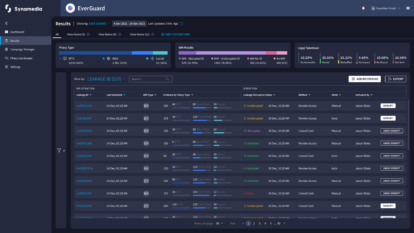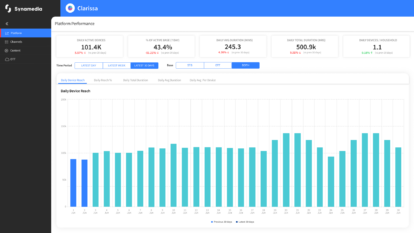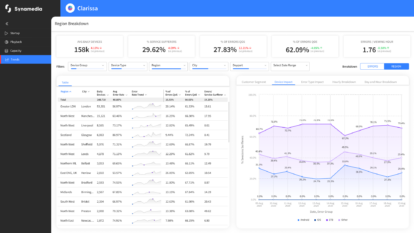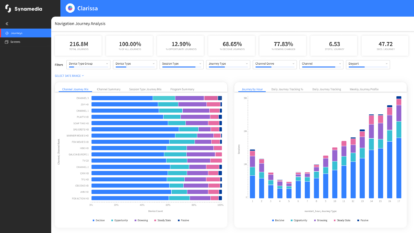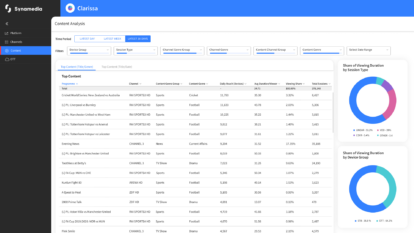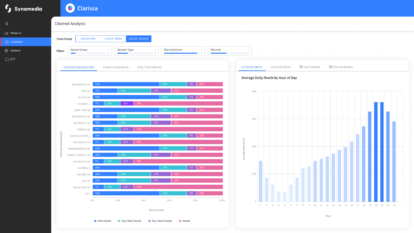We all have that friend. You know, the one who can never seem to make a decision and is always looking for someone else to choose.
One such acquaintance of mine always asks the waiter, “What do you recommend?” This baffles me no end. Why on earth would you expect a total stranger to make an accurate food recommendation for you? The person has no idea of what you like/don’t like, what you’re in the mood for. Need I go on?
Depending on how big and varied the menu is, there’s a slight chance you’ll get a good recommendation. But for those of us who have frequented restaurants with a menu the size of ‘War and Peace’, we understand the odds are pretty low.
- Rocking the content recommendation world
- Start the journey to better content recommendations
- Synamedia Go – content recommendation and more
- Get free actionable performance insights on your platform’s metadata and UX
When it comes to video content, the menu is enormous… and growing by the day. The simultaneous explosion of OTT streaming services, social media, and other video sharing platforms feeds us with an endless supply of content from which to choose.
AI video recommendation
This abundance of content, however, makes it tough to find content that really resonates. So, for a video content recommendation engine to succeed, it has to know something about the user. Remember, this isn’t chicken parmigiana versus lasagna; it’s video entertainment.
Video content recommendation engines use artificial intelligence to suggest videos tailored to each user’s interests, preferences, and viewing habits. The recommendations can be based on a wide variety of factors, including the user’s search/watch history and liked/shared content. It can even use mood. With the right recommendation engine, a video provider can reap plenty of benefits, while providing a better user experience. Let’s see how.
Benefits for the user:
- A good recommendation engine helps users save time by curating content for them. Rather than spending hours searching for content they might enjoy, users can rely on recommendations to surface relevant and engaging titles, which is particularly beneficial for users with multiple streaming services.
- Beyond personalised content curation, a good content recommendation engine can serve up new titles that otherwise might not have been found. This can be especially useful for niche content, since the engine broadens users’ viewing horizons and introduces them to diverse options or to content that’s not widely promoted.
Benefits for the video operator:
- When users find content that aligns with their interests, they’re more likely to spend time on the platform. This keeps them actively engaged and encourages longer viewing sessions, which can positively impact a streaming service’s metrics.
- Streaming services rely on content curation to present a well-rounded selection of titles to users. Content recommendation engines assist in the process by automating content curation based on user preferences, popularity, trending topics, and other factors. This ensures that the streaming platform delivers a diverse and engaging range of content to suit different tastes.
- By helping users find content they enjoy, engines increase customer satisfaction, which makes users more likely to stay on board and continue using the service. Higher satisfaction levels also trigger positive word-of-mouth communication to attract new users to the platform.
- When users find niche content or the exact titles they search for in a content catalogue, they gain a sense of value, which leads to further customer satisfaction. As a bonus, video services can use this UX data to further their content acquisition plans and commissioning strategies.
Delivering better content recommendations
When users find content that aligns with their interests, they’re more likely to spend time on a platform, which boosts user engagement and ultimately leads to greater advocacy for the service.
(Now, if only someone would come up with a restaurant menu recommendation engine, then I wouldn’t have to hear my friend complain about having chosen the sea bass over the meatloaf…)
To transform your user experience with better content recommendations, explore the power and benefits of Synamedia Go.Recommend and unlock the power of personalised content discovery.
Or click here to arrange your fifteen-minute discovery call.
About the Author
JT Taylor is responsible for developing and driving all product marketing, sales enablement, and thought leadership initiatives for two areas of the Synamedia portfolio: Synamedia Go, an open, modular, and flexible streaming video platform; and Gravity, a device management platform that can simplify the management of subscriber’s whole home network. When he’s not wearing his marketing hat, JT is an avid golfer and pseudo musician.

